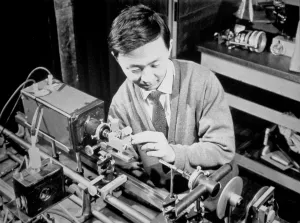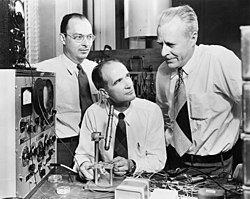The Origins of Technology
- Chaitanya Nallaparaju

- Jul 6, 2024
- 5 min read
Updated: Jul 9, 2024
How do technologies originate and come about? Who decides and shapes our need for certain gadgets? Why don’t we have holographic displays or flying cars yet?
As an ardent reader of Sci-Fi and a student of science and engineering, I’ve always been curious about the origins and diffusion of technology into the world and how they shape our lives.
Recently, the plutocrat and Techno-King Elon Musk and the Chief AI Scientist of META AI Research had a Twitter spat. It was a clash of science vs. technology/engineering innovation. Being a digital spectator to this showdown made me question what drives technological advancement and how new technologies emerge. This essay is a tangible output of my exploration to answer this curiosity. If you’ve ever wondered about these questions, you’ll find this interesting and enlightening. Please read on.
What Was the Elon-Yann LeCun Spat About?
For those who didn’t witness this Twitter war, here’s some context around the debate and the points of conflict. When Elon Musk posted an AI role at his company on Twitter, Yann LeCun, Chief AI Scientist at Meta, quickly commented, criticizing Musk for restricting scientific progress by not allowing scientists working on AI in his company to publish their research. You can read LeCun’s full opinion on Elon here.
Image of the twitter spat deemed meme worthy. Click to view.The main points of disagreement were:
AI Development and Bold Claims: Musk makes bold, visionary claims about AI progress and risks, while LeCun criticizes Musk’s predictions as overhyped and unrealistic.
Science vs. Product/Engineering: Musk dismissed LeCun’s scientific research, questioning its contribution to technology development, while LeCun argued that autonomous cars wouldn’t be possible without his work on Convolutional Neural Networks.
Open vs. Corporate AI Research: Musk values internal, unpublished work as scientifically valuable, but LeCun emphasizes the importance of published, peer-reviewed work as the foundation of scientific research.
While these opinions have their own merits, my curiosity was drawn to what leads to the development of a technology—in this case, AI. Musk defends product and engineering-led development, while LeCun sides with scientific research. Although I admire Elon’s audacity to dream new realities and have great respect for scientists, there’s no specific side to take in this debate as each has its own validity. The origin and development of new technologies are complex and multifaceted, often emerging from the interplay between science, engineering, and innovation. Both Musk and LeCun are right to an extent, but not entirely.
Before delving into some origins of technologies, let’s define and differentiate the commonly used or misused terms: Science, Engineering, and Innovation . If this small section
seems too theoretical and context setting for you , please skip it out and move to the next.
Science, Engineering and Innovation
Science focuses on exploring and discovering new knowledge about the natural world through systematic observation, measurement, and experimentation. Scientists aim to understand fundamental principles and expand our knowledge of how things work.
Engineering applies scientific and mathematical principles to design, develop, and create new products, systems, or structures that solve specific problems or meet particular needs. Engineers use existing knowledge to make things work and build functional solutions.
Innovation involves introducing new ideas, methods, or products that create value or improve upon existing solutions. It often combines insights from science and engineering to develop novel technologies or applications that drive progress.
Scientific Research as a Source of Technology
Many developed nations invest in scientific research as an underlying engine for growth. Science expands knowledge, creates new avenues of growth and thinking, and sometimes directly leads to technological advancement. At other times, it indirectly helps civilization progress. It is imperative to continue efforts in science for the expansion of the human race.
Some well-known examples of technologies that came directly from basic science research are:
Fibre Optics: Fundamental research in physics laid the foundation for modern fiber optic networks, which are the backbone of the internet.
Nuclear Power: The discovery of nuclear fission by Otto Hahn and Lise Meitner in 1938 led to the development of nuclear reactors for power generation.
Transistors: The invention of transistors, which underpin the entire electronic and digital revolution, was based on fundamental research in solid-state physics and quantum mechanics conducted at Bell Labs in the 1940s.
CRISPR Gene Editing: This groundbreaking biotechnology tool emerged from basic research into bacterial immune systems, leading to the discovery of the CRISPR-Cas9 mechanism.
Historic images of Scientists who invented Fibre Optics, transistors & discovered Fission.These examples illustrate how scientific research underpins technological advancement. The pursuit of fundamental knowledge can lead to transformative technologies with wide-ranging practical applications. The relationship between basic research and technological innovation is complex and often involves a significant time lag, with some innovations taking decades after initial scientific discoveries.
Technology Developed Through Practical Engineering Without Scientific Research
Yes, some technologies are developed and discovered without underlying scientific theory and understanding. Throughout human history, technologies have emerged from practical problem-solving, human ingenuity, and industrial development rather than scientific research.
For instance, the steam engine, a hallmark of the Industrial Revolution, was developed by engineers and inventors like Thomas Newcomen and James Watt before the scientific principles of thermodynamics were fully understood. The development of the steam engine, in turn, advanced thermodynamics, rather than the other way around.
Other examples include:
Fire, Metallurgy, Stone Tools, and Agriculture: Throughout human history, we’ve developed tools and techniques based on practical observations without formal scientific understanding. Products and tools have been engineered without understanding all the principles governing them.
Trial and Error Inventions: The Wright brothers’ development of the airplane embodies this approach. While they might have naturally applied laws of motion, they did not directly use advanced theorems around drag and airlift. They employed a scientific method through practical experiments, which led to developing a three-axel control system.
Technology Origins Through Human and Market Interactions
Some technologies originate due to social and cultural factors intermingling with advances of the time and economic forces, leading to new technologies and innovations. Social media, smartphones, remote work technologies, and e-commerce platforms arose due to the changing needs of customers and market incongruities.
The Origin of AI
Returning to the debate between Elon and Yann, the origin of AI is neither purely scientific research-based nor clearly engineering-driven. Theoretical work laid the foundation for exploring, understanding, and simulating intelligence, while practical applications and industrial efforts have driven its evolution and integration into various aspects of life. The interaction between these domains will continue to advance AI and potentially lead to singularity or AGI. Foundational computing research must continue so that engineers can try out new approaches.
Increasingly, modern advanced technologies will emerge from interactive innovation approaches for driving technological progress.
The Role of Human Imagination, Ingenuity, and Creativity
While the origins of technologies can be complex and varied, science and technology progress only when there is creativity and human imagination at the edge of knowledge, interacting with and shaping our future and reality.
I’ll leave you with a metaphor: science and technology are like two wheels of a bicycle. Both can turn independently, but for progress in the journey, we need them both to turn together to move us forward.












